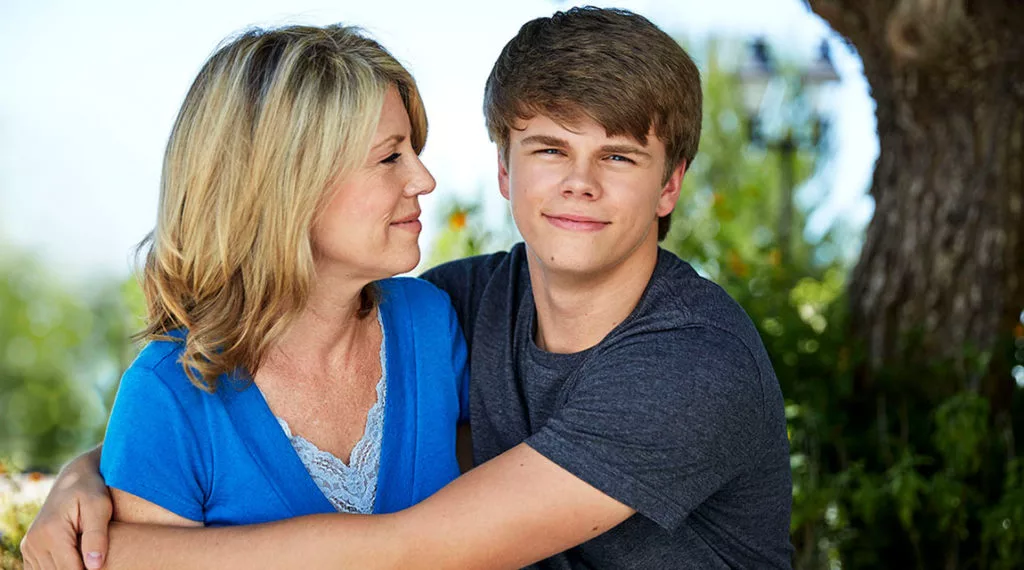It’s easy for teens to download free apps. But they may not realize that there are risks involved with using this seemingly innocuous technology. In addition, parents are often unaware of the many dangerous apps for teens.
Teen apps can expose kids to the possibility of cyberbullying. Furthermore, teens who use anonymous chat apps are vulnerable to predators. Therefore, parents need to know what apps are available for teens.
Here are some of the most important apps for parents to monitor.
AfterSchool
This teen chat app connects students at the same school. And users can download and join the conversation while remaining anonymous. Consequently, they can post anonymous pictures or videos for other students to see. As a result, this increases the potential for cyberbullying.
Ask.fm—One of the Most Dangerous Apps for Teens
This app for ages 13 and up provides a question-and-answer format. Thus, users can interact via Q&A with friends, peers, and anonymous users. Hence, the app has become the site of cyberbullying, which has been linked to suicides. Furthermore, loose regulation and lack of monitoring increase the danger. First popularized in Europe, the app has now become well known in the United States.
Bigo Live
On Bigo Live, teens stream live video of themselves. Other users can see and comment on the footage. In addition, users can also receive and send “beans,” virtual gifts that cost real money. Therefore, the focus is on status, spending money, and collecting “gifts.”
BitLife
This simulation game assigns teens an identity, or avatar. Subsequently, their characters “age” from infancy to death. Throughout the process, teens can choose how their avatars make money, spend time, and form relationships. As a result, their characters attain various levels of happiness, health, knowledge, and appearance. What makes this one of the dangerous apps for teens is that kids can choose to “hook up” with other characters, drink, do drugs, gamble, and even commit crimes.
Blendr
On Blendr, teens send each other messages and exchange photos and videos. In addition, they rate the “hotness” of other users. And this type of superficial social comparison can undermine teen self-esteem and identity formation. In addition, there is no age restriction on Blendr. Hence, teens may potentially be having conversations with adults via Blendr.
Discord
Online gamers use this app and site to connect via text, voice, and video. The problems with Discord include accessible adult content and the ability to chat privately with strangers. Kids who are under 18 can easily click through to view mature content.
Holla
Holla is all about connecting with strangers. Teens can sign up using a phone number or Facebook account. Next, they are matched with a stranger for a video chat. Plus, they can scroll through and choose people they want to talk to. And they can use the location tracking to find people on the app who are nearby. According to testers, both nudity and violence are common on this app. Hence, this can be one of the most dangerous apps for teens.
Houseparty
Houseparty is a video chatting app. Therefore, friends can communicate through live video. In addition, they can “talk” with each other in group chats. Because there is no screening, inappropriate content is not filtered. And, just like at a real party, teens can end up connecting with people they’ve never met before.
IMVU
Like BitLife, IMVU lets teens create avatars. And as with Bigo Live, they can also use real money to buy objects for their avatars, such as outfits and furniture. Or they can “earn” money by taking surveys or watching ads. Using the website or the app, users then interact through their avatars. The red flag with IMVU is the focus on sexuality. The avatars’ appearance is highly sexualized, and avatars can have virtual sex.
Kik—High on the List of Dangerous Apps for Teens
Kik is a messaging app that allows teens to connect with others using only a username. Hence, users can text photos, drawings, or pre-designed greeting cards to individuals or groups. Because there is no age verification, experts report that Kik is popular with sexual predators. Moreover, Kik has also been used for cyberbullying. Rebecca Sedwick, the Florida teen who committed suicide as a result of bullying, reportedly used Kik and Voxer (see below) in addition to Ask.fm.
Like—Magic Music Video Editor
With Like, teens create short videos with lip-synching. They collect “likes,” in order to move up the list of popular users. In addition, they can send messages and give other users virtual “gems”—purchased with real money. In addition, Like allows strangers to interact with each other, which presents a danger for teens.
Lipsi
Lipsi users can give others feedback without revealing their identities. Instead, they stay in “ghost mode.” Thus, cyberbullying is common on this app for teens. In addition, users can link Lipsi to their Instagram profiles. As a result, all the comments appear in their Instagram feeds.
Sayat.Me
This app is also built around anonymous feedback. The site advertises itself as a place for “honest feedback and opinions from your friends.” However, the anonymous interaction gives users a free pass to criticize others without consequences.
Omegle
Like Holla, Omegle is designed to facilitate online conversations with random strangers. That’s why experts agree that it’s one of the most dangerous apps for teens. Users can text or video chat with people from more than 190 countries. According to Common Sense Media, interactions on Omegle “can easily result in conversations that are filled with explicit sexual content, lewd language, and references to drugs, alcohol, and violence.”
Socratic Math & Homework Help
This app pulls answers from the Internet when teens post their homework questions.
Hence, the biggest risk is cheating. While this app can be useful for gathering information, teens might be tempted to use it to get answers without learning the associated concepts.
Tellonym
This is yet another anonymous messaging app. And as with many other dangerous apps for teens, it invites users to get and give anonymous feedback. Teens can also link their Tellonym accounts to their other social media accounts. Again, online bullying is frequent.
Vora
Vora is a dieting app. Hence, the technology allows users to track their fasting activity. As a result, Vora has become popular with teenagers who struggle with eating disorders. In addition, the app connects users with other dieters and fasters who then can encourage each other in this life-threatening behavior.
Voxer
Voxer is what’s known as a “PTT” or “push-to-talk” app. Hence, it works like a walkie-talkie, allowing users to exchange short voice messages. Some adult users find Voxer helpful for work purposes. But for teens, it can become a forum for delivering hurtful messages via both texting and talking.
Yubo (formerly Yellow)
Referred to as “Tinder for teens,” Yubo lets users look at pictures of strangers in their area. They can become friends with a person and then send them private messages. While the app is meant for teens, older people can lie about their age in order to start conversations with younger users.
Zepeto
Zepeto combines features of teen chat apps, social media, and avatar-based apps. The primary problems with this app are the ability to connect with strangers and the focus on image and appearance.

How Parents Can Protect Kids from Dangerous Apps for Teens
Here are a few strategies that parents can use to protect teenagers from some of the perils and pitfalls of online apps.
Stay up to date with technology. New apps targeted to teens are being created all the time. Therefore, parents need to stay on top of the trends. For example, searching “new social media apps” will bring up the latest information. As a result, parents can stay ahead of the game by learning about the apps before their kids do.
Make sure kids know the risk. Once they understand the issues, teens will likely be on guard, even if they continue using dangerous apps. While adolescents are hardwired for risk-taking, having relevant information will help them make smarter choices.
Set boundaries around technology. It’s parents’ responsibility to help their teens unplug and take regular digital detoxes. In addition, parents should know what their kids are doing on their phones. Hence, they can view teens’ apps or use software that monitors their online activity. While it’s important to respect teens’ privacy, parent also need to stay tuned in to their technology use.
Communicate IRL. That’s “in real life.” Ongoing, meaningful connection between kids and parents is one of the most powerful factors in supporting teen mental and physical health. When parents communicate regularly with their kids and know what they’re up to, adolescents are much less likely to fall prey to dangerous apps for teens.
Photos by Newport Academy and Rob Hampson from Unsplash.






